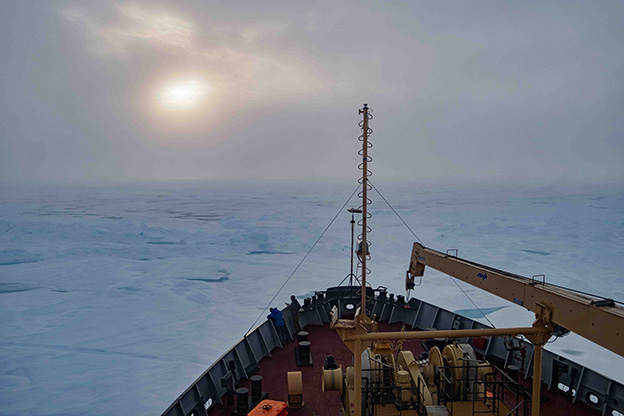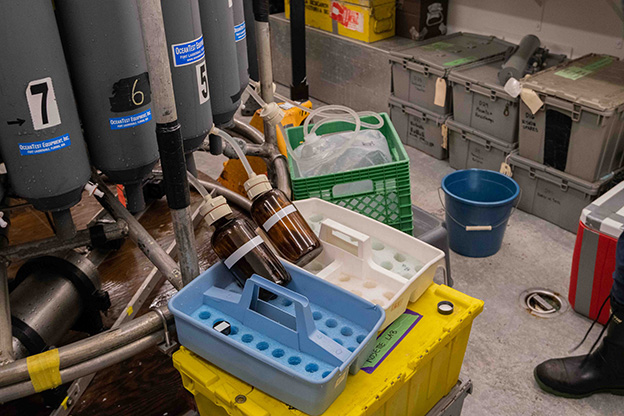Dispatch 6: An Experiment at Sea
Elizabeth Bailey
September 21, 2022
In addition to our standard annual measurements of the Beaufort Gyre, this yearly expedition to the Canada Basin also hosts scientists who collect their own samples for research projects including masters theses, Ph.D. research, and more. One of the experiments that is part of the 2022 expedition is being led by Celine Gueguen and her two Ph.D. students, Justin Forget and Nicolas Sylvestre from the Universite de Sherbrooke. Their experiment will be conducted on board for the rest of the cruise! The goal of their project is to analyze the ambient water properties that affect carbon in different water masses (i.e., a particular layer in the ocean that is defined by its temperature and salinity).
Last night, Celine and her students collected more than 30 liters of seawater from 3 different depths ranging between 300 to 2500 meters. After filtering the water to remove any microbial life or bacteria currently living in that water mass, they separated the filtered water into sample bottles of about a liter of water each – giving them approximately 40 individual samples for 3 water masses. Then they placed the water in the fridge overnight to let the water settle a bit.
This morning Justin and Nicolas injected the sample bottles with bacteria that they collected from the bottom of the Pacific Summer Water layer, a subsurface water mass that is relatively warm and salty (compared to the overlying water) that typically resides between 30 and 100 meters in depth. For the rest of the cruise, Celine and her students will let the samples incubate on board, allowing the bacteria to live within each water sample. Then they will take measurements of FDOM (fluorescent dissolved organic matter) and nutrients in their incubated samples in the ship’s main lab, as well as collect samples to measure bacteria and the molecular make up of carbon in each sample. These will be run in a lab on shore after the cruise.
Apart from the science, how has the Arctic been treating us? The ship broke through a couple more large, old ice floes yesterday and this morning. So, it’s been a bit of a bumpy ride, but great for pictures and videos! In addition, we had our first snow flurry this morning during a CTD cast and much of the fog that we’ve been seeing for the last few days has begun to clear up! Hopefully, in the next couple of days we will be able to see some sun (and maybe some bears)!



